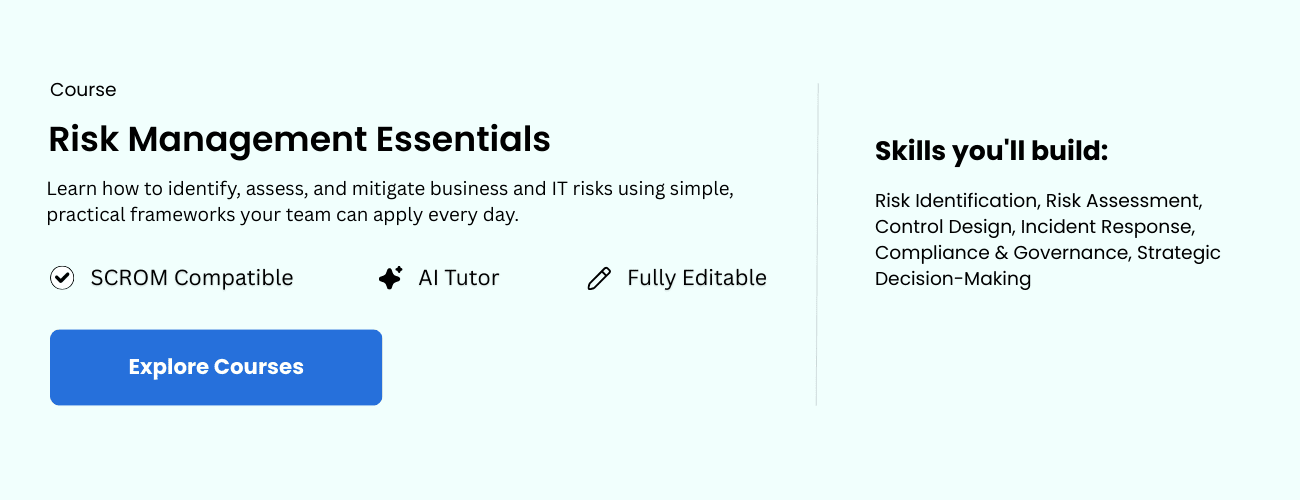The Importance of IT Risk Management in 2025
The Evolving Cyber Threat Landscape
Recent industry reports highlight a surge in sophisticated cyberattacks, such as ransomware, supply chain breaches, and zero-day exploits. Cybercrime damages are projected to cost the world $10.5 trillion annually by 2025, driven by interconnected devices and digital reliance. These threats increasingly target small and medium-sized businesses, which often lack robust defenses, emphasizing the need for comprehensive risk management strategies across all organizational sizes.
Emerging Technologies and Associated Risks
Technologies like artificial intelligence (AI), Internet of Things (IoT), and cloud computing significantly expand an organization’s attack surface. AI can automate and mask attacks, while IoT devices often have weak security protocols, creating exploitable vulnerabilities. Cloud migration offers scalability but introduces risks related to data privacy, misconfigurations, and access controls. Industry experts advise implementing advanced risk assessment strategies to proactively identify and mitigate these exposures.
Strategic Vigilance and Response Needed
Organizations are adopting proactive frameworks aligned with standards like ISO 27001 and NIST Cybersecurity Framework. Continuous monitoring, threat intelligence sharing, and fostering a security-aware culture are essential for effective risk mitigation. Additionally, tightening regulations such as GDPR and SEC directives impose stricter data protection obligations, with non-compliance risking hefty fines and reputational harm.
Why IT Risk Management is Business Critical in 2025
Robust IT risk management safeguards assets, maintains stakeholder trust, and ensures operational continuity. As threats become more sophisticated, companies investing in adaptive strategies will be better positioned to succeed amid uncertainty. Emphasizing vigilance, ethical use of emerging tech, and resilient security practices are key to thriving in today’s digital world.
Core Components of Effective IT Risk Management Training
An effective IT risk management training program equips cybersecurity professionals with the skills to identify, evaluate, and mitigate security threats. These core elements create a resilient security posture by combining theoretical foundations with practical skills, enabling teams to stay ahead of evolving cyber risks.
Risk Assessment Fundamentals
Mastering risk assessments is central to training. This includes identifying assets, vulnerabilities, and threats using both qualitative and quantitative methods. Familiarity with frameworks like ISO 27001 and NIST SP 800-30 ensures assessments are thorough and aligned with industry standards, supporting consistent risk analysis across the organization.
Incident Response Planning
Preparedness for security incidents minimizes damage and speeds recovery. Training should cover developing and executing incident response plans, establishing response teams, communication protocols, and escalation procedures. Simulation exercises help teams learn to contain breaches and analyze attack origins, reducing downtime and data loss.
Practical Case Studies and Simulations
Real-world case studies bring theory to life. Analyzing recent incidents—such as ransomware or supply chain attacks—provides insights into attack vectors and defenses. Interactive modules, including threat modeling and tabletop exercises, reinforce learning and improve critical thinking skills.
Emphasizing Ongoing Education
Cyber threats evolve constantly; thus, continuous education is vital. Keeping staff updated on emerging risks, new regulations, and technological advances helps maintain a resilient security stance. Certifications, workshops, and industry forums support ongoing skill enhancement and vigilant security practice.
Summary
To build resilience, organizations must focus on risk assessment, incident response, case-based learning, and continuous education. Developing these skills empowers IT teams to proactively safeguard assets, protect reputation, and maintain stakeholder trust in an ever-changing threat landscape.
Trends and Innovations in IT Risk Management Education
The field of IT risk management education is rapidly shifting, driven by technological progress and complex cyber threats. Innovative educational tools—such as digital platforms, AI, and automation—are transforming how professionals acquire skills, ensuring continuous learning and adaptation to new challenges.
Digital Learning Platforms for Flexibility
Online courses, webinars, and virtual classrooms allow global access to training, making it easier for professionals to stay current. Interactive simulations and scenario-based exercises are integral for mastering complex risk scenarios. A 2022 IDC report states that organizations using digital learning reduce the time to adopt new standards by 40%, highlighting efficiency gains.
Artificial Intelligence in Learning
AI personalizes education through adaptive pathways and real-time feedback. Tailored modules on emerging risks—like ransomware or phishing—keep learners up to date. Studies indicate AI-driven training improves retention by up to 30%, helping organizations develop more capable cybersecurity teams.
Automation for Efficiency
Automation streamlines training processes, managing assessments, certifications, and compliance. Automated threat simulations provide realistic practice scenarios that reinforce response skills. Gartner reports that automation reduces time-to-competence by around 25%, accelerating organizational readiness.
The Significance of Continuous Learning
Given the pace of cyber evolution, ongoing education is essential. Regular training updates, refresher courses, and advanced modules foster a proactive security environment. NIST emphasizes that continuous learning is key to resilience and effective risk management.
Building Resilience through Innovation
Combining digital tools, AI, automation, and continuous education forms a foundation for organizational resilience. Forward-thinking training emphasizes agility and practical application, preparing professionals for unpredictable threats. Embracing these trends enhances security posture and helps protect organizational assets against future risks.
Implementing a Successful IT Risk Management Training Program
A well-structured training program is crucial to building organizational capacity for proactive risk identification and mitigation. This involves designing targeted curricula, measuring success, and creating a culture of security awareness throughout the organization.
Designing an Effective Curriculum
Start with a needs assessment, then define clear, measurable objectives. Develop engaging content using diverse methods—interactive modules, case studies, and simulations—that cater to different learning styles. Tailor modules for specific roles, ensuring technical teams and executives receive relevant training. Include policy and compliance education aligned with standards like ISO 27001.
Measuring Training Effectiveness
Use KPIs such as completion rates, assessment scores, incident reduction, and response time improvements. Gather participant feedback through surveys to identify areas for enhancement. Tracking these metrics helps refine the training and align it with organizational risks and strategic goals.
Embedding a Risk-Aware Culture
Leadership should actively participate and communicate the importance of risk management. Offer regular updates, refresher courses, and recognize proactive behavior. Facilitate open communication for reporting suspicious activities, fostering a culture where risk awareness becomes part of daily operations. Integrate risk management into policies and procedures to normalize best practices throughout the organization.

Looking Ahead: The Future of IT Risk Management
In 2025 and beyond, organizations must adopt a proactive approach to cybersecurity. Incorporating advanced tools like zero-trust architecture, continuous monitoring, and adaptive training is essential to face evolving threats. Building a culture of ongoing learning and resilience will be critical for safeguarding digital assets in an increasingly complex environment.
Regular risk assessments, scenario planning, and staying informed about industry developments help organizations stay prepared. The key to future success lies in strategic, forward-thinking risk management and investing in the continuous development of cybersecurity skills. This comprehensive approach ensures organizations are equipped to navigate the unpredictable landscape of tomorrow’s digital world.












